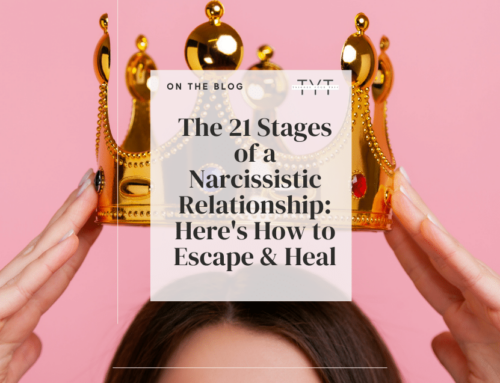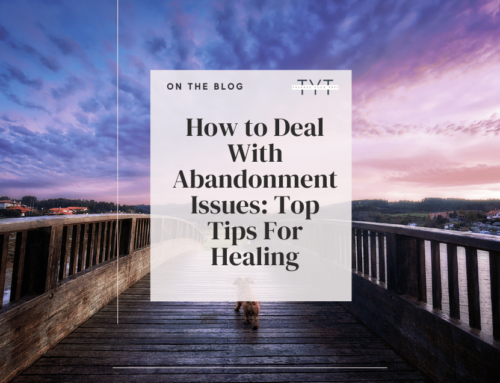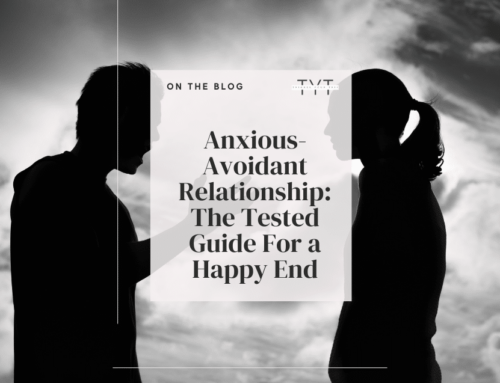Ever felt like you’re just a little too obsessed with someone in your life? Well, science might have the answer. According to attachment theory – which looks at how our childhood emotional experiences create profound effects far into the future and also one’s adult relationships – these powerful emotions we feel towards certain people are likely rooted much more profound than what meets the eye. If this idea intrigues you and you want to learn more about it, many excellent books on attachment theory are available for further exploration.
What Are The 4 Different Attachment Styles?
Secure Attachment
This attachment type occurs when a person has developed trusting, strong emotional bonds with their parents or caregivers early in life. This attachment style allows them to feel secure and safe in the comfort of their familial relationships. Secure people are generally confident, comfortable relying on others, and capable of regulating their emotions under stress.
They may also have better understanding and communication skills, be more organized and productive in daily tasks, and have healthier and loving relationships with others.
Avoidant Attachment
Attachment theory explains avoidant attachment as the type where a person has experienced a lack of trust or physical contact early in life, resulting in them feeling they need to protect themselves.
Avoidantly attached people often have a deep-rooted fear of rejection and abandonment, which may result in having issues forming lasting intimate relationships, avoiding seeking help and support from others, and struggling with communication.
They may also struggle to self-regulate their emotions, deal with guilt or shame, and avoid engaging in intimate conversations or activities that could lead to rejection.
Related: How Hyper-Independence Can Signify Trauma (& 5 Ways To Cope)
Anxious Attachment Style
This attachment style occurs when a person has experienced inconsistent caregiving or had an overprotective and controlling caregiver growing up. This type of attachment, according to attachment theory, can lead to feeling a deep sense of insecurity and fear of abandonment, which often manifests in clingy behavior, difficulty trusting others, and constantly seeking reassurance from those around them.
Anxious people may also find themselves constantly seeking approval from others and putting their desires on the back burner for fear of rejection or hurt. They may struggle to express their feelings openly, struggle with setting boundaries, and become distressed when receiving criticism or being given independence.
Additionally, people with anxious attachment styles are more prone to developing mental health issues such as depression and anxiety due to their increased susceptibility to stress.
Anxious Avoidant (or disorganized attachment style)
This type of attachment occurs when a person has experienced inconsistent and rejecting caregiving, resulting in an emotionally chaotic relationship with their primary and perhaps emotionally immature parents or caregivers.
Anxious, avoidant people may experience difficulty forming lasting intimate relationships, struggling to trust others, and managing their emotions. They may also find themselves setting unrealistic expectations for themselves or those around them and struggle to regulate their reactions in stressful situations.
Related: Fearful Avoidant Attachment: 7 Signs of Craving Yet Fearing Love
The Best Books On Attachment Theory to Improve Your Romantic Relationships
If you’re looking to learn more about attachment theory and how it applies to your romantic relationships, some great books are available. These books offer an overview of the different types of attachment, as well as tips on improving communication within relationships and building healthy relationships with loved ones;
A Secure Base: Parent-Child Attachment and Healthy Human Development
One of the best books on attachment was by John Bowlby, exploring attachment theory and the different attachment styles we develop from childhood experiences and attachment trauma. This book looks at how these formative relationships shape our behavior, emotions, current attachment style, and even our romantic relationships in later life.
The book also examines how secure attachments with caregivers can lead to healthy self-esteem, while insecure attachments can lead to negative emotional and psychological consequences.
Attached: The New Science of Adult Attachment and How It Can Help You Find—and Keep—Love
Another one of these powerful tools is ‘Attached: The New Science of Adult Attachment and How It Can Help You Find—and Keep—Love,’ a book written by Amir Levine and Rachel S.F Heller that dives into the science of attachment theory and how it can help people understand their romantic relationships better.
The book examines the four primary attachment style types and how they affect our bond with our partners. It is also an attachment theory workbook that provides tips on looking into how to recognize others’ and one’s own attachment style and practical advice on how to foster a healthy long-term relationship with your partner.
Wired for Love: How Understanding Your Partner’s Brain and Attachment Style Can Help You Defuse Conflict and Build a Secure Relationship
As the title suggests, ‘Wired for Love: How Understanding Your Partner’s Brain and Attachment Style Can Help You Defuse Conflict and Build a Secure Relationship’ is a book by Stan Tatkin that provides an in-depth analysis of the science behind attachment theory.
Drawing on not only attachment theory but also the research from psychologists and neuroscientists, Tatkin explores how understanding one’s own attachment style and that of their partner can help one take actionable strategies to create lasting intimate relationships that are secure.
The book also takes a deep dive into how one’s own attachment wounds can manifest themselves in destructive behaviors and tips on using the science of love and the power of attachment to build strong relationships with the people around you.
Related: The 7 Stages of Trauma Bonding: Here’s Why You Can’t Leave
Hold Me Tight: Seven Conversations for a Lifetime of Love
‘Hold Me Tight: Seven Conversations for a Lifetime of Love’ is a book by Dr. Sue Johnson that breaks down the science of attachment theory and provides readers with tools to begin their healing journey and sustain healthy, lasting relationships.
Drawing on decades of research, Johnson argues that relationships can be strengthened through conversations focused on understanding our and our partner’s emotions. The book teaches how to foster secure attachments with our partners and create deeper connections and a healthy platonic or romantic relationship.
Becoming Attached: First Relationships and How They Shape Our Capacity to Love
‘Becoming Attached’ is a self-help book that promotes understanding of how our formative relationships and attachment styles shape our behavior, emotional well-being and current attachment styles in later life. Written by Robert Karen, it delves into the inner workings of human attachment, looking at why we obsess over certain people and how these relationships shape our capacity to love.
‘Becoming Attached’ is one of the best books on attachment – an essential read for anyone looking to improve their relationships, increase their understanding of attachment theory and gain a better insight into why they need certain people in their lives.
Related: 9 Mommy Issues in Men That Make Him Avoid Commitment
Is Attachment Theory Still Relevant?
Attachment theory has been relevant for a long time. It is still relevant because it helps explain why people form strong connections with certain people and how these connections can shape their lives. Simply put, it helps promote understanding and increase stability when overcoming attachment disorders and insecure styles.
Attachment theory can help us understand our relationships better and create healthier relationships with the people around us.
Related: Reactive Abuse & Narcissism: What Is It & How To Deal With It
What Are The 4 Ss of Attachment Theory?
Attachment style analysis is a mental framework created b John Bowlby and Mary Ainsworth. The four S of secure attachment styles indicates feeling secure, seen, soothed, and safe.
Giving kids these feelings helps them develop healthy bonds in real life by assisting them to gain a deeper understanding of attachments to certain people so that they may use this knowledge to build strong relationships.
How Can I Change My Insecure Attachment Style?
Understand attachment theory and identify your attachment style.
Take the time to process your past relationships and how they shaped you, as this will help you recognize patterns in your behavior that led to your attachment type. Once you have identified these behaviors, work on replacing them with healthier ones by taking small steps toward a more secure relationship with yourself and the people around you.
These steps include practicing self-care, learning positive coping skills such as mindfulness and relaxation techniques, strengthening existing relationships, and seeking supportive environments.
Spot behavioral patterns that trigger your insecurities
By spotting behavioral patterns that trigger insecurities, individuals can identify the root causes of their insecurity and take steps to address it. This process involves analyzing how past relationships shaped one’s behavior and understanding why one feels insecure in certain situations. By doing so, individuals can reframe their thoughts and behaviors to create deep understanding of a more secure sense of self and healthier relationships.
For instance, if an individual has experienced abandonment or neglect, they may have adopted maladaptive coping strategies such as avoiding closeness or seeking constant reassurance from others.
By recognizing these patterns of thought and behavior, they can work on replacing them with healthier ones. By taking these steps, individuals can move toward a more secure way of relating to themselves and others by developing an understanding of healthy attachments.
Find a reliable person to help you develop a more secure attachment style
Finding a reliable and trustworthy person to help you develop a more secure attachment style can be beneficial in many ways. Having an outside perspective can help you gain insight into how your behavior has resulted in your current issues and provide an understanding of how past experiences have influenced these problems.
This outside perspective can also provide supportive guidance on creating a more secure attachment style. Ultimately, these five self-help books can be invaluable resources for those looking to gain insight into the inner workings of attachment types and how our constructive relationships shape us.
Related: Emotional Permanence Explained & 5 Top Tips on How to Cope
Communicate your needs, set boundaries, and fight the fear of creating deep connections.
For those struggling with inefficient communication patterns and creating meaningful relationships, learning to communicate your needs and setting boundaries can be essential in developing healthy attachments. Fighting the fear of deep connections is also a great way to cultivate secure attachment styles.
Such fears often come from mistrust or insecurity, so understanding why these fears exist and finding ways to confront them can help one create healthier attachments. By taking the time to understand Attachment Theory, we can gain insights into our relationships and learn how to cultivate secure attachments that will provide us with lifelong benefits.
Do some emotionally focused therapy
Lastly, for those unable to make headway in their attachment-style journey on their own, emotionally focused therapy can be a great way to find support from a professional. Emotionally focused therapy in private practice is an evidence-based approach developed by Dr. Sue Johnson that helps couples and individuals understand the emotional needs within relationships and how they can better meet them.
This therapy focuses on identifying unmet needs and enacting constructive change through communication and interaction between parties to create strong bonds built on trust and mutual understanding.
Other forms of therapy that might help include cognitive behavioral therapy and interpersonal therapy, which focus on understanding and addressing behavior patterns that might contribute to one’s feelings of insecurity.
Commitment therapy may also help those looking to develop more secure attachment styles by understanding the importance of commitment and navigating challenges that may arise.
Related: Therapy for Narcissistic Abuse: The 5 Best Affordable Alternatives
Final thoughts
Attachment theory is a powerful tool for understanding the complexities of human relationships. By understanding the four and our attachment styles, we can gain insight into why we obsess over certain people, how to build healthier relationships with others, and even how to improve our current romantic relationships.
With the help of these five non-fiction books on attachment theory, you can learn how to recognize, understand, and build secure attachments that can last a lifetime.
So if you’re looking for ways to enhance the quality of your relationships—romantic or platonic—these books will help.





